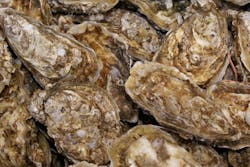The Nature Conservancy selected CH2M to manage the monitoring, permitting, and design of a 6.5-mile restoration project, which will help restore a healthy, functioning oyster habitat in East Bay near Pensacola, Fla. The Pensacola East Bay Oyster Habitat Restoration Project is the first phase in a multi-year effort to restore this critical estuarine habitat system that has been significantly reduced from its former range across the Gulf's bays and estuaries.
Phase one of the project, funded by the National Fish and Wildlife Foundation Gulf Environmental Benefit Fund, provides for three years of pre-restoration monitoring, project design and permitting to develop the most effective and efficient blueprint. Reef construction will follow in later phases of the project. The project is being implemented by CH2M, Ecology and Environment, and the Nature Conservancy. These organizations will apply their proven strategy of close collaboration among engineers, ecologists and area stakeholders in this oyster restoration project.
"Most oyster restoration projects are small scale. The Pensacola East Bay Oyster Habitat Restoration Project will be a model for large-scale coastal habitat restoration," said Jeff DeQuattro, gulf program manager for the conservancy. "Science and engineering will drive the solutions, with full-scale design and modeling to ensure lasting resilience and durability."
Healthy oyster reefs and other estuarine and marine habitats help protect coastlines from wave damage and erosion. But 85% of oyster reefs have been lost worldwide, largely through overharvesting, pollution, habitat loss and other factors, making them the most severely affected marine habitat on Earth. The Gulf of Mexico and Pensacola Bay region are no exception. This restoration project, the most significant on the Gulf Coast and the largest CH2M has designed, will begin to restore oyster reefs in East Bay, where they were once plentiful, while also providing shoreline protection, a nursery and a foraging habitat for other aquatic life. Reef restoration is also expected to complement the commercial oyster reefs and industry that have been hit hard over the years.
"By designing and constructing oyster reefs, we'll promote oyster settlement on the reef, provide for an additional aquatic habitat and reduce shoreline erosion," said David Stejskal, CH2M's project manager. "The coast will see great restoration benefits such as enhanced fish and bird habitat and more sea grasses, and protect the vulnerable shoreline."
Stejskal and the CH2M team have been providing preliminary assistance to the conservancy on this project since February 2015.
Sharing a passion for natural infrastructure as a viable way to increase coastal and climate change resilience, the conservancy and CH2M are creating groundbreaking collaborations with scientists and engineers on these types of projects and opportunities to examine and compare nature-based solutions for risk reduction. The conservancy selected CH2M for this project because of its in-house ecology, modeling, coastal engineering, and design experience on oyster habitats and living shoreline projects, combined with its local homegrown knowledge of the Gulf of Mexico.
CH2M plans to complete design and permitting of the project by early 2018 while working in conjunction with Ecology and Environment Inc., which will conduct baseline and water quality monitoring for the conservancy. With monitoring estimated to be complete by November 2018, the conservancy will seek additional funding for construction from a variety of sources.
Source: CH2M


